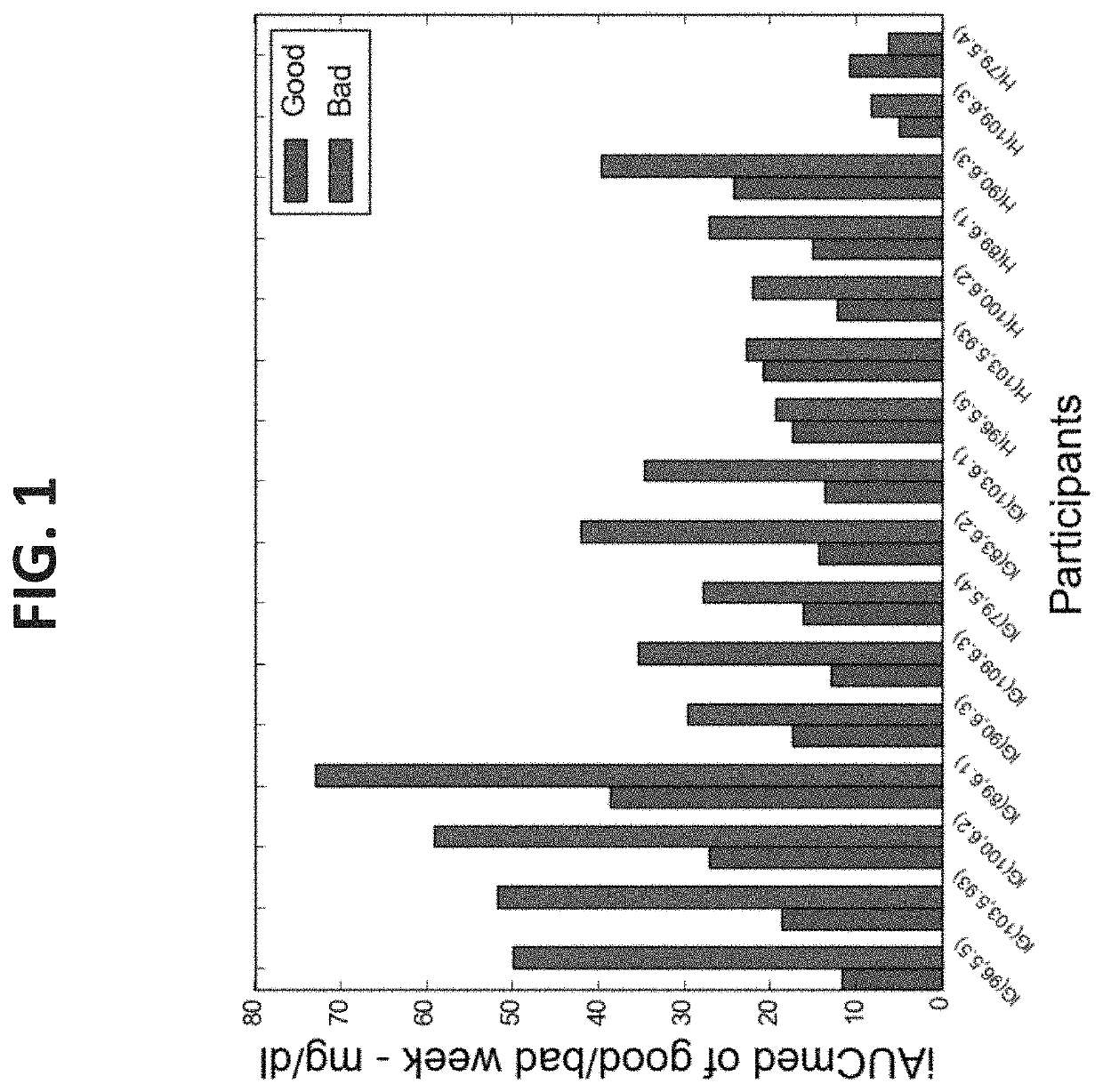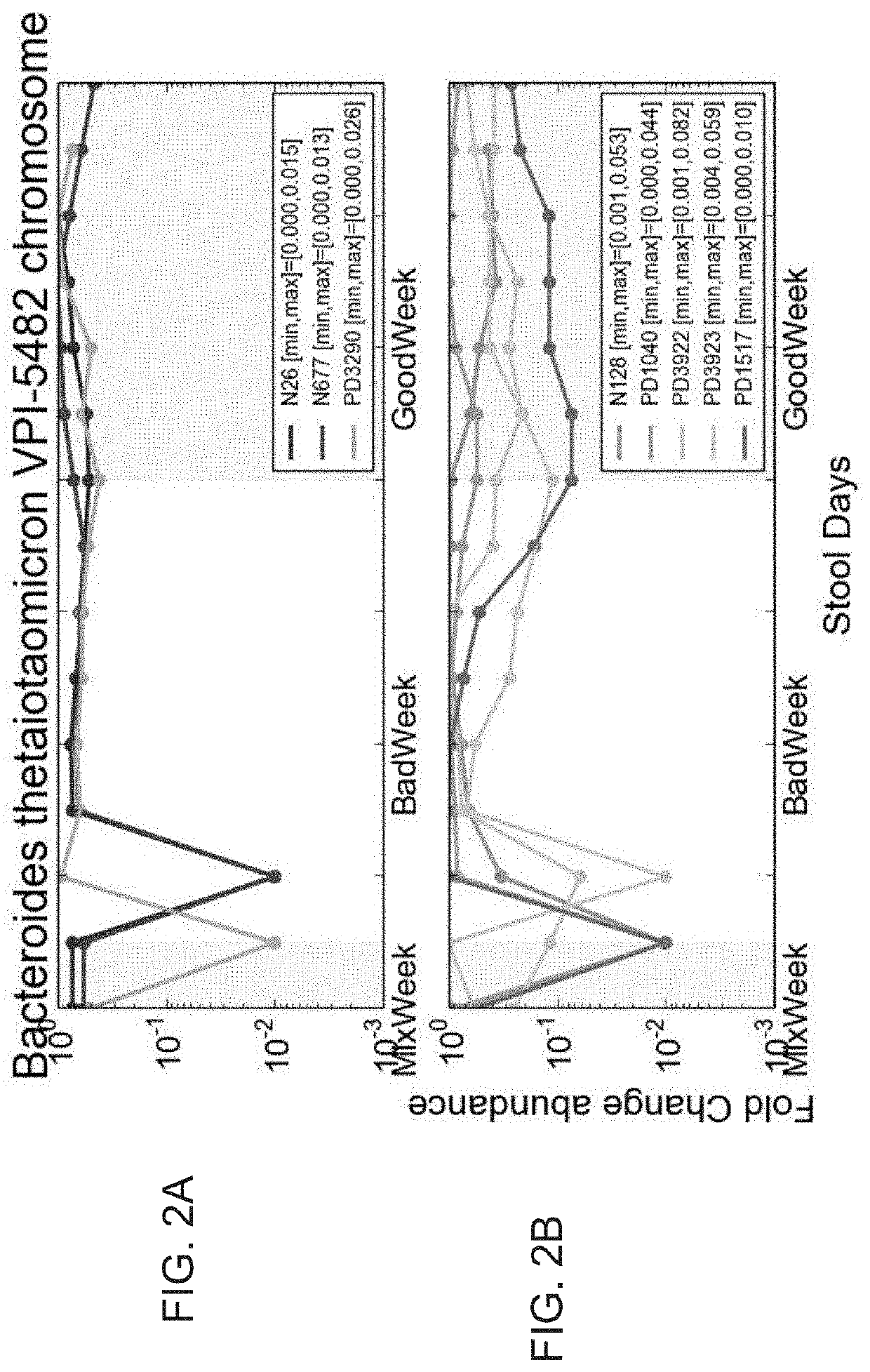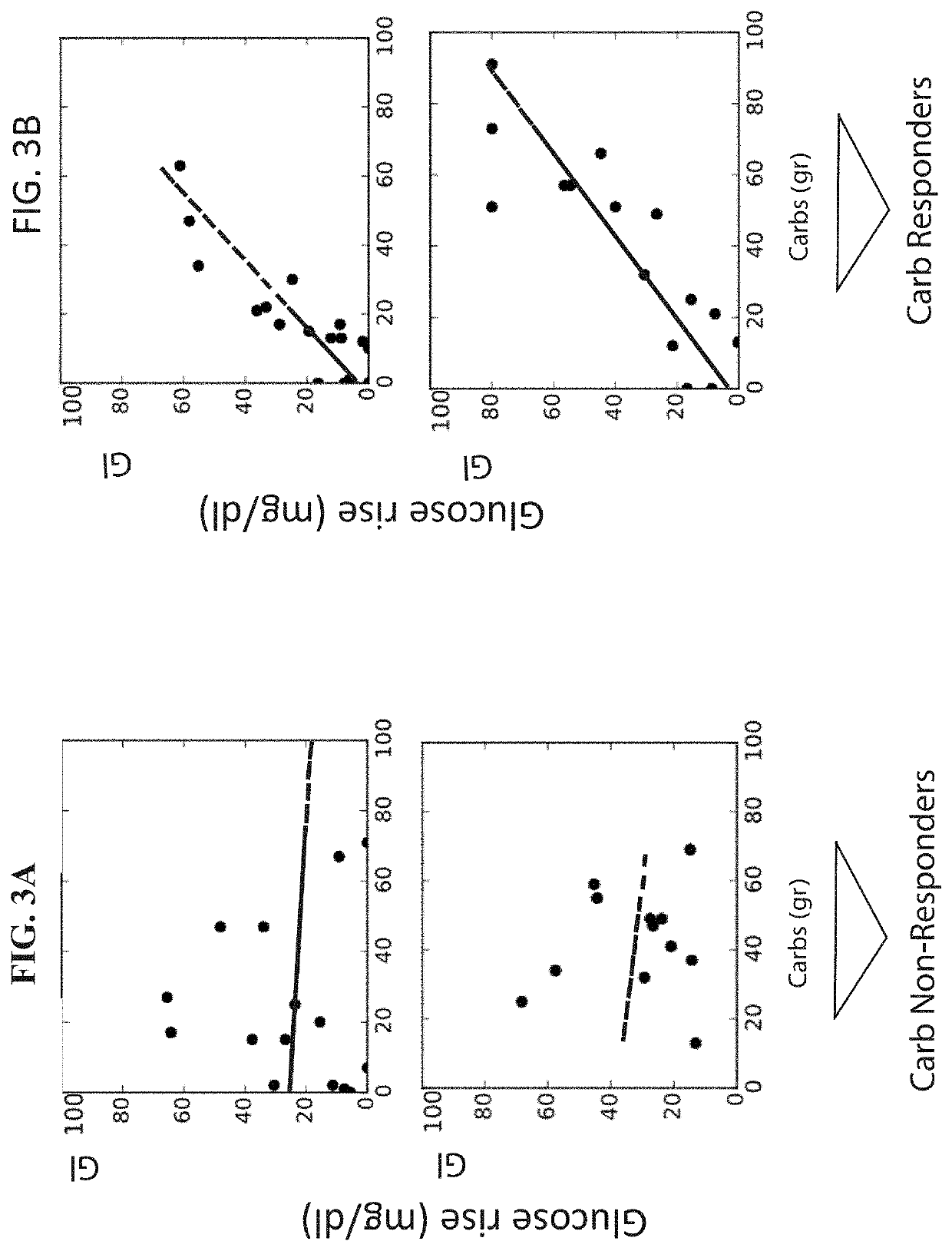Bacterial populations for promoting health
a technology for promoting health and bacteria, applied in the field of probiotic and antibiotic compositions for promoting health, can solve the problems of increasing the risk of developing many chronic diseases of aging, and current therapies appear to not work, and achieve the effect of reducing the number of bacteria
- Summary
- Abstract
- Description
- Claims
- Application Information
AI Technical Summary
Benefits of technology
Problems solved by technology
Method used
Image
Examples
example 1
Effect of Diet on Bacterial Populations
[0192]Materials and Methods
[0193]16 impaired glycemic response and healthy participants engaged in a three week experiment of diet intervention. The first week was a profiling week, from which two personalized test diets were computed: (1) one full week of a personalized diet predicted to have “good” (low) postprandial blood glucose responses; and (2) one full week of a personalized diet predicted to have “bad” (high) postprandial blood glucose responses. The present inventors evaluated whether indeed the personalized diet of the “good” week elicited lower blood glucose responses as compared to the personalized diet given on the “bad” week.
[0194]Before the experiment, a dietitian planned a personal tailored diet for 6 days as follows: each participant decided how many meals and calories he or she eats in a day. All meals in the 6 days were different and in every day the same number of meals and calories were consumed with a gap of at least 3 ho...
example 2
Bacteria Significantly Associated with High Blood Glucose Response to Food
[0206]182 participants were profiled comparing their overall blood glucose response (“Median glucose”) as well as their sensitivity to intake of carbohydrates (“Carb-Response”). Median glucose was computed as the median level of blood glucose during the entire week in which the participant was connected to a continuous glucose monitor. Carb response was the linear slope of the graph linking the glucose response of the participant to all meals consumed during the week to the amount of carbohydrates (in grams) in the meal. High slopes indicate that high sensitivity in the glucose responses of the individual to the amount of carbs in the meal and low slopes indicate a low sensitivity to carb intake (FIGS. 3A-3B).
[0207]For each of these features (median glucose and carb response), the association between the feature and multiple different microbiome signatures was computed.
[0208]Each test was performed with differ...
example 3
Measurements of Postprandial Responses, Clinical Data, and Gut Microbiome
Materials and Methods
[0209]Study Design:
[0210]Study participants were healthy individuals aged 18-70 able to provide informed consent and operate a glucometer. Prior to the study, participants filled medical, lifestyle, and nutritional questionnaires. At connection week start, anthropometric, blood pressure and heart-rate measurements were taken by a CRA or a certified nurse, as well as a blood test. Glucose was measured for 7 days using the iPro2™ CGM with Enlite™ sensors (Medtronic, MN, USA), independently calibrated with the Contour™ BGM (Bayer AG, Leverkusen, Germany) as required. During that week participants were instructed to record all daily activities, including meals and standardized meals, in real-time using their smartphones; meals were recorded with exact components and weights.
[0211]Standardized Meals.
[0212]Participants were given standardized meals (glucose, bread, bread and butter, bread and cho...
PUM
 Login to View More
Login to View More Abstract
Description
Claims
Application Information
 Login to View More
Login to View More - R&D Engineer
- R&D Manager
- IP Professional
- Industry Leading Data Capabilities
- Powerful AI technology
- Patent DNA Extraction
Browse by: Latest US Patents, China's latest patents, Technical Efficacy Thesaurus, Application Domain, Technology Topic, Popular Technical Reports.
© 2024 PatSnap. All rights reserved.Legal|Privacy policy|Modern Slavery Act Transparency Statement|Sitemap|About US| Contact US: help@patsnap.com










